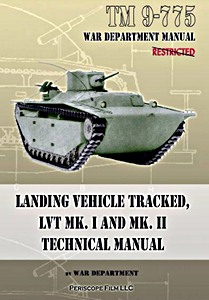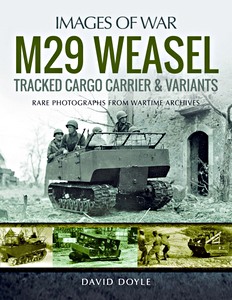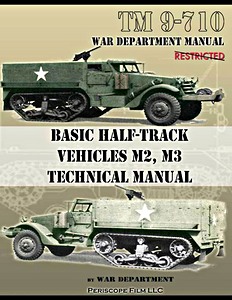Landing Vehicle Tracked, LVT MK. I and MK. II - Technical manual (TM9-775)
The Landing Vehicle Tracked (LVT) was a class of amphibious warfare vehicle, a small landing craft, introduced by the United States Navy, Marine Corps and Army during World War II. Originally intended solely as cargo carriers for ship to shore operations, they rapidly evolved into assault troop and fire support vehicles as well.
The LVT Mark I was the first military model. Traveling at a respectable six knots in the water and twelve mph on land, it could deliver twenty four fully equipped assault troops to the beach. Though it was only intended for delivering supplies inland until wheeled vehicles could be brought ashore, the LVT could supply supporting fire from two .30 cal M1919 Browning machine guns.
Many LVTs were refitted prior to the Tarawa landing to hold two .50 cal Browning heavy machine guns forward, with the .30 cal guns aft. The vehicle was not armored and its thin steel hull offered virtually no protection, although prior to Tarawa some vehicles received nine mm of armor plating to the cab.
The LVT's tracks performed well on sand, but not on tough surfaces. The rigid suspension threw tracks and roller bearings corroded in salt water.
Proper maintenance of the new machine was often an issue, as few Marines were trained to work on it, and early models suffered frequent breakdowns. The LVT Mark II featured new powertrain and torsilastic suspension. The aluminium track grousers were bolted on, making changes much easier since they wore out quickly on land and more so on coral. Hard terrain performance was much better compared to the LVT Mark I.
Created in 1944, this technical manual reveals a great deal about the LVT's design and capabilities. Intended as a manual for those charged with operation and maintenance, it details many aspects of its engine, cooling, fuel, powertrain and other systems.
Originally labeled restricted, this manual was declassified long ago and is here reprinted in book form. Care has been taken to preserve the integrity of the text.
Product details
| Author: | U.S. Army War Department |
|---|---|
| Details: | 412 pages, 97756.1 x 9.1 in (248300.5 x 23 cm), paperback |
| Illustrations: | many photos and drawings |
| Publisher: | Periscope Film (USA, 2013) |
| ISBN: | 9781937684365 |

Landing Vehicle Tracked, LVT MK. I and MK. II - Technical manual (TM9-775)
Language: English
Available on Amazon - safe payment and fast delivery
Buy on Amazon.comBuy on Amazon UK
Buy on Amazon CA










